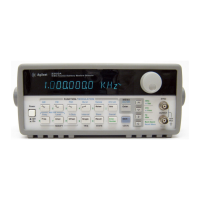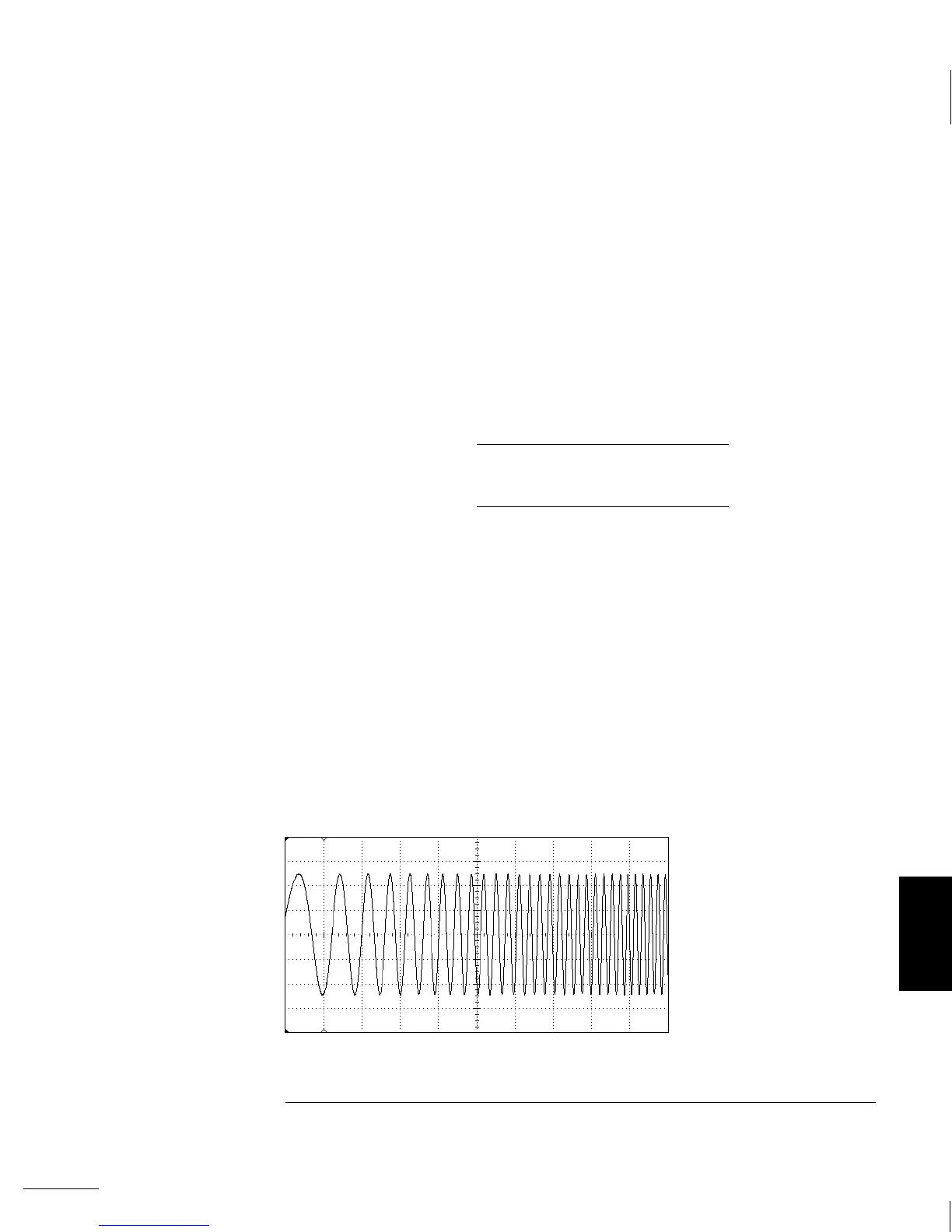Frequency Sweep The 33120A performs phase-continuous frequency
sweeping — stepping from the sweep start frequency to the sweep stop
frequency with between 2,048 and 4,096 discrete frequency steps.
The direction of frequency sweeps can be varied by setting the stop
frequency either above or below the start frequency. Individual
frequency steps are either linearly or logarithmically spaced based on
the sweep mode setting. Like
FSK modulation (described on the next page),
the sweep function is also a special case of frequency modulation (
FM).
All of the
FM operations described on the previous page also apply to
sweep when the following translations are applied:
Carrier Frequency
=
Start Frequency + Stop Frequency
2
Deviation =
Start Frequency - Stop Frequency
2
The modulation waveshape for sweeps is a ramp wave or exponential
wave for linear or log sweeps, respectively. The logic sense of the ramp
or exponential modulation signal (positive or negative ramp) is selected
when the stop frequency is either larger or smaller than the start
frequency. Like the
FM function, changes to sweep parameters cause the
generator to automatically compute a modulation signal and download
it into modulation
RAM. Similarly, the sweep time parameter adjusts the
period of the modulating waveform. The sweep function also allows
triggered operation. This is like frequency modulating with a single
cycle burst of the modulating signal beginning when a trigger is
received. Trigger signals can come from the rear-panel Ext Trig terminal,
the front-panel Single button, or from commands over the remote interface.
A sine wave sweep from 50 Hz to 5 kHz with a linear 1 second sweep time.
7
Chapter 7 Tutorial
Modulation
289

